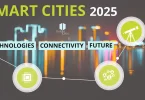Brief Description: This comprehensive analysis explores the transformative impact of AI art technology on modern creativity, examining technical capabilities, ethical challenges, and legal frameworks while addressing controversial applications and the need for responsible innovation in digital art generation.
The ai art revolution has fundamentally redefined visual creativity, enabling artificial intelligence systems to generate extraordinary imagery that challenges traditional artistic boundaries. These sophisticated platforms interpret natural language descriptions and produce photorealistic content within moments, democratizing creative expression while simultaneously raising profound questions about digital ethics and consent https://cortexlab.app/undress-ai-technology-ethics-regulation. As ai art technology becomes increasingly powerful and accessible, understanding both its transformative potential and serious implications becomes essential for navigating this rapidly evolving digital landscape responsibly.
Contents
Exploring AI Art Technology
Foundational Technology Principles
AI art represents a revolutionary paradigm in visual content creation where artificial intelligence systems generate images, artwork, and digital compositions through sophisticated computational methodologies. These platforms harness advanced generative neural networks trained on massive datasets encompassing millions of visual examples paired with comprehensive descriptive annotations and artistic metadata.
Contemporary ai art systems demonstrate remarkable proficiency, processing complex creative instructions and generating visually compelling outputs across diverse artistic styles, from hyperrealistic portraits to abstract compositions that exhibit deep understanding of aesthetic principles, cultural contexts, and artistic traditions spanning centuries of human creativity.
The technological sophistication of modern ai art platforms enables them to understand nuanced creative briefs, maintain stylistic consistency across multiple generations, and produce content that appears authentically human-created while incorporating subtle artistic techniques that demonstrate comprehensive mastery of visual arts fundamentals.
Technical Architecture and Processing
The computational backbone of ai art leverages cutting-edge neural network architectures including diffusion models, transformer networks, variational autoencoders, and generative adversarial networks. These systems undergo extensive training procedures, absorbing complex relationships between visual patterns, artistic techniques, compositional elements, and linguistic descriptions through analysis of vast image databases.
AI art creation involves multiple sophisticated processing layers: advanced natural language understanding interprets user specifications and creative briefs, computer vision algorithms extract relevant visual features from training collections, and generative models synthesize original imagery that satisfies specified criteria while maintaining artistic coherence and visual authenticity.
Modern ai art platforms can execute sophisticated image modification tasks, altering existing photographs through selective element adjustment, style transformation, or creative enhancement while preserving core compositional integrity and recognizable features with remarkable precision and consistency.
Creative Applications and Controversial Uses
Professional ai art deployment has transformed numerous creative sectors, empowering concept artists to rapidly develop innovative visual concepts, enabling graphic designers to explore diverse aesthetic directions, and allowing marketing professionals to generate targeted visual content efficiently while reducing production costs and development timelines.
Educational institutions strategically implement ai art for creating compelling instructional materials, historical visualizations, scientific illustrations, and interactive educational experiences that enhance student learning outcomes and engagement across diverse academic disciplines and educational environments.
Entertainment industries leverage ai art for storyboard creation, character design, visual effects pre-visualization, and concept development, significantly accelerating creative workflows while maintaining high artistic standards and enabling rapid iteration of visual concepts.
Unfortunately, the same technological capabilities that power beneficial ai art applications also enable harmful implementations, including tools specifically designed to manipulate personal photographs without authorization, potentially creating inappropriate or compromising imagery that violates individual privacy, dignity, and fundamental personal rights.
Technical Excellence and Ethical Challenges
Technological Achievements and Capabilities
AI art technology showcases extraordinary advancement in artificial intelligence research, demonstrating sophisticated comprehension of visual composition, artistic heritage, cultural symbolism, and creative interpretation across diverse artistic movements and contemporary trends. The democratization impact proves transformative – these tools have eliminated traditional barriers to visual creation, enabling individuals to produce professional-quality artwork regardless of formal artistic education or expensive equipment access.
Computational performance characterizes modern ai art systems, generating high-resolution, professionally-rendered imagery within seconds compared to extensive periods required for traditional artistic creation methods. Technical sophistication manifests through understanding complex lighting dynamics, atmospheric effects, maintaining stylistic consistency across image series, and seamlessly integrating historical artistic traditions with contemporary aesthetic innovations.
Quality progression continues accelerating, with ai art systems now producing imagery virtually indistinguishable from human-created content while incorporating subtle artistic techniques that demonstrate comprehensive understanding of visual arts principles, creative expression methodologies, and aesthetic theory foundations.
The accessibility revolution enabled by ai art technology has profound implications for creative industries, educational institutions, and individual artists worldwide, breaking down barriers that previously limited artistic expression to those with specialized training or expensive equipment.
Ethical Complexities and Societal Implications
Despite impressive technological achievements, ai art technology presents substantial ethical concerns requiring immediate attention from international policymakers, technology developers, and human rights advocacy organizations. Non-consensual image manipulation represents the most problematic application, where existing photographs undergo unauthorized modifications, potentially generating intimate or deceptive content that fundamentally violates personal autonomy and human dignity.
Gender-specific targeting of certain ai art applications significantly amplifies these ethical challenges. Technologies designed primarily to manipulate women’s imagery reflect systematic patterns of digital exploitation and harassment, creating unprecedented opportunities for psychological harm, reputational damage, and personal victimization with potentially devastating long-term consequences for affected individuals.
Information authenticity deterioration presents another critical societal challenge as ai art quality reaches near-perfect levels. Distinguishing between genuine and artificially generated content becomes increasingly problematic for general audiences, systematically undermining public confidence in visual documentation and enabling sophisticated misinformation campaigns that can manipulate public opinion and democratic processes.
Privacy violations extend beyond individual consent to encompass broader concerns about data collection practices, training dataset ethics, algorithmic bias, and the potential for ai art systems to reproduce or exploit personal information without appropriate safeguards, creating new vulnerabilities for identity manipulation and unauthorized commercial exploitation.
Legal Frameworks and International Regulation
Global Regulatory Landscape
Legal structures addressing controversial ai art applications demonstrate considerable variation across international jurisdictions, reflecting different cultural values, legal traditions, technological readiness levels, and regulatory approaches. United States regulation operates primarily through state-level legislation, with California, Texas, New York, Virginia, Illinois, Washington, Florida, and Colorado implementing comprehensive laws targeting deepfakes and non-consensual intimate imagery.
European Union strategies emphasize extensive user protection through GDPR frameworks and Digital Services Act provisions, establishing clear platform accountability standards and comprehensive individual rights concerning ai art content creation, distribution, moderation, storage, and removal procedures with substantial penalties for violations.
Asia-Pacific nations including Japan, South Korea, Australia, Singapore, Taiwan, New Zealand, India, Thailand, and Malaysia have introduced specialized legislation specifically addressing digitally manipulated intimate content, acknowledging unique challenges presented by advanced ai art technology and establishing substantial criminal penalties for malicious applications and distribution.
The fragmented nature of international regulation creates enforcement challenges while highlighting the urgent need for coordinated global approaches to address the cross-border implications of ai art technology misuse.
Legal Consequences and Enforcement Mechanisms
Individuals utilizing problematic ai art applications face considerable legal exposure across multiple jurisdictions and regulatory frameworks. Criminal prosecution becomes increasingly common in regions with applicable legislation, particularly for creating, distributing, monetizing, or facilitating access to non-consensual intimate imagery through ai art platforms or related technologies.
Civil liability presents substantial financial risks, with victims successfully obtaining significant monetary compensation for emotional trauma, privacy violations, defamation, reputational damage, psychological distress, lost economic opportunities, and related damages. Courts increasingly recognize the severe impact of ai art manipulation on individual wellbeing, professional standing, and personal relationships.
Professional consequences frequently accompany legal penalties, with employers, academic institutions, professional associations, and licensing bodies implementing stringent policies strictly prohibiting controversial ai art usage, potentially affecting career prospects, professional licenses, and institutional affiliations.
Intellectual property considerations add complexity when ai art systems utilize copyrighted source material without proper authorization, potentially exposing users to additional legal claims, financial penalties, and cease-and-desist orders from rights holders seeking protection of their creative works and commercial interests.
Protecting Human Dignity and Digital Rights
Fundamental Autonomy Principles
AI art development must prioritize essential human dignity and personal autonomy principles that constitute the ethical foundation of responsible technological innovation and digital interaction. Every individual deserves absolute control over their digital representation, including comprehensive authority over how their appearance, identity, personal characteristics, and body are portrayed in generated or manipulated imagery.
Explicit informed consent becomes critically important when ai art involves personal imagery, recognizable likeness, or identifiable characteristics. Creating modified, intimate, or manipulated content requires clear, documented, ongoing, and revocable permission rather than presumed, implied, or retroactively obtained authorization from affected individuals.
Identity protection represents a fundamental right that individuals maintain regarding appearance usage, portrayal methods, distribution channels, and commercial exploitation, even when ai art technology makes unauthorized manipulation technically accessible to broad audiences without specialized knowledge or expensive equipment.
Establishing Comprehensive Protection Frameworks
Addressing ai art challenges demands coordinated multi-stakeholder approaches that effectively balance technological innovation with robust human rights protection mechanisms. Technical safeguards integrated directly into generation systems provide essential first-line defense, including sophisticated detection algorithms, content verification mechanisms, robust watermarking technologies, and embedded ethical constraints preventing harmful applications.
Platform accountability measures must effectively prevent misuse while supporting legitimate creative applications of ai art technology. This requires advanced content moderation systems, transparent policy enforcement, proactive monitoring capabilities, effective user reporting mechanisms, and productive collaboration with law enforcement agencies when violations occur.
Educational initiatives promoting comprehensive digital literacy ensure users understand both extraordinary creative potential and serious implications of ai art systems, including legal vulnerabilities, ethical obligations, privacy considerations, and potential consequences affecting individuals, communities, and society broadly.
Regulatory development must create balanced frameworks that protect individual rights while fostering beneficial innovation, requiring ongoing collaboration between technologists, policymakers, educators, civil society organizations, and affected communities to establish appropriate boundaries and enforcement mechanisms.
Building a Responsible Future
The evolutionary trajectory of ai art technology fundamentally depends on our collective commitment to balancing transformative creative capabilities with unwavering respect for human rights, dignity, consent, and privacy. Technological advancement must consistently harmonize with social responsibility, ensuring these powerful creative instruments enhance human expression while protecting individual autonomy and safety in digital environments.
Success requires sustained collaboration between diverse stakeholders, continuous refinement of both technical and regulatory approaches, and steadfast commitment to placing human welfare at the center of technological development processes. The future of ai art technology will be determined by our ability to harness its extraordinary creative potential while safeguarding vulnerable individuals from exploitation and ensuring that innovation serves humanity’s best interests.







